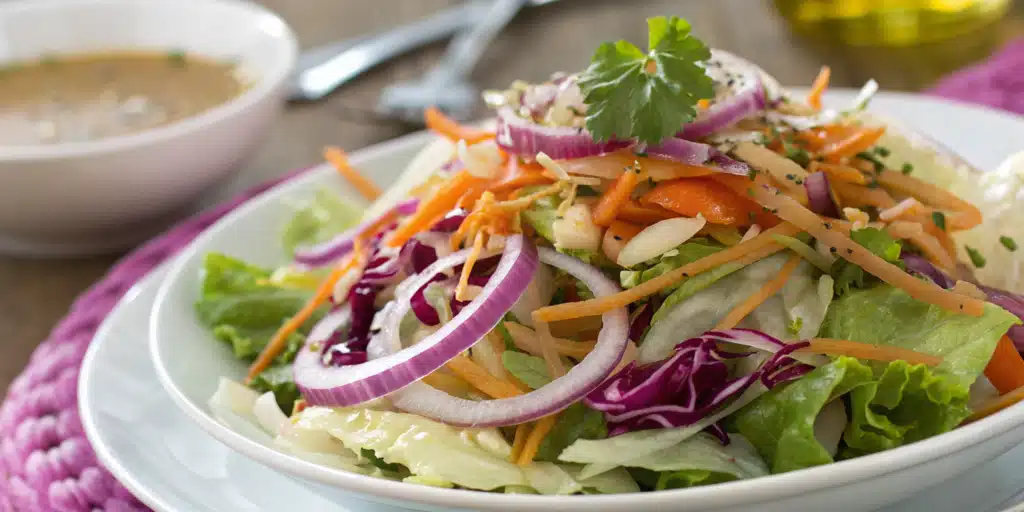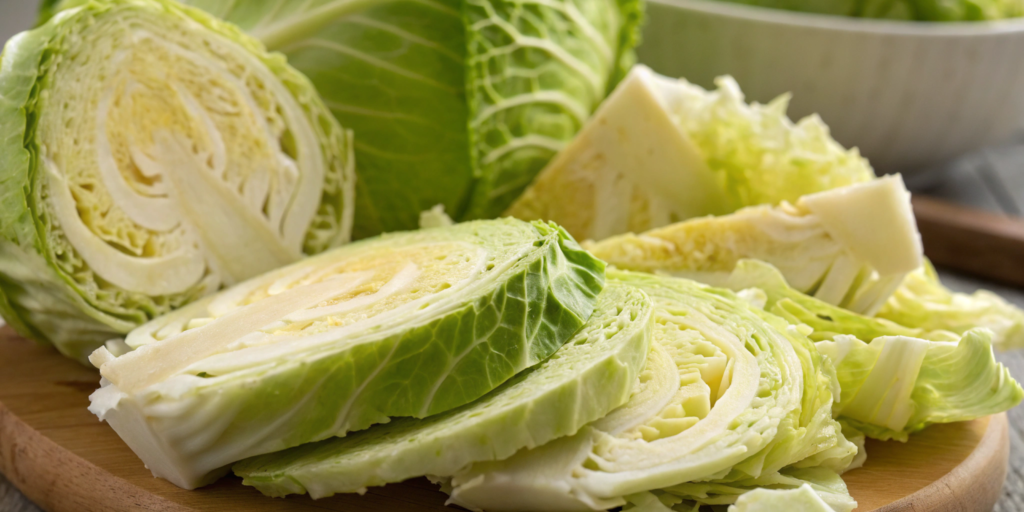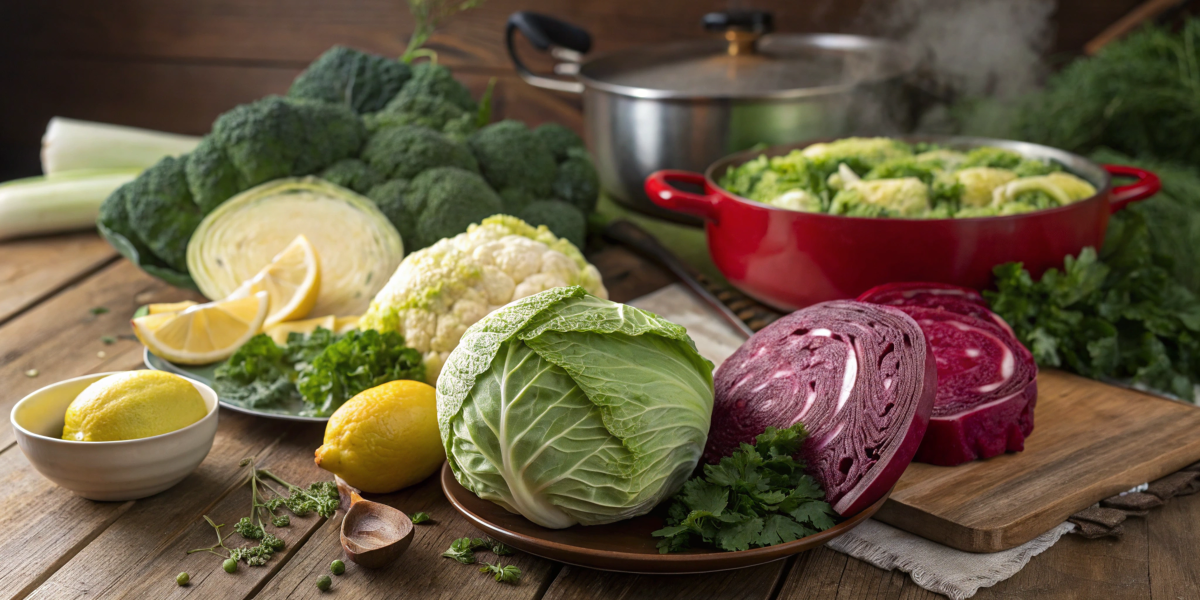Written by Sarah Miller
Cabbage Nutrition and Health Benefits
Cabbage — that boring old leafy green — gets short shrift, but boy, is it a nutritional heavyweight! From promoting your gut health to possibly helping prevent chronic disease, this cruciferous veggie should be on your plate. But how do you maximize your nutritional bang for your buck? In this article, we examine the healthiest way to eat cabbage, including cooking methods, myths, and ideas for cooking with this versatile vegetable, as part of your everyday diet. Well, strap in, as we will reveal how to unlock the secrets of this superfood and optimize the health benefits of it. You will learn what is to eat cabbage healthy and change your mealtime!
Unlocking the Nutritional Power of Cabbage
Cabbage Nutrition Facts: A Deep Dive into Vitamins and Minerals
First things first, what’s the deal with cabbage? It’s not all just crunch; this veggie is full of vitamins and minerals. Vitamin C for immunity, vitamin K for blood clotting, a healthy dose of folate, vital for cell growth and development. And cabbage is rich in minerals, including potassium, which is good for the heart, and manganese, which is important for healthy bones. (it’s a little nutritional powerhouse!
Health Benefits of Cabbage: From Gut Health to Chronic Disease Prevention
So what do all these nutrients do for you, exactly? Well for one the fibre in cabbage is great for your gut and helps with your bowel movements. Cabbage also boasts strong, cancer-fighting antioxidants, including glucosinolates, which have been associated with a decreased risk of some types of cancer. Also, eating cabbage may reduce inflammation and even benefit heart health. No wonder people have been enjoying this veggie for centuries!
Different Kinds of Cabbage and Their Nutritional Differences: Green, Red, Savoy and Beyond
So here’s where this gets spicy. Do you know that there’s more than one kind of cabbage? And before you think of cabbage only in its common green form, let’s not forget about red cabbage, green cabbage’s colorful cousin that’s loaded with anthocyanins (those colorful pigments that also serve as powerful antioxidants) as well as savoy cabbage (with frilly green leaves and a more subdued flavor).
Each has a slightly different nuance in their nutritional profile, so experimenting with different types adds variety and even more health boosts. Next time you are at the grocery store, do not just get a head of cabbage, but go searching for some and find out which one you like the best! After all, how to eat cabbage — the healthiest way — also means knowing what type to choose.
Healthiest Ways to Cook Cabbage: Maximizing Nutritional Benefits
Steaming Cabbage: A Healthy Cooking Method for Nutrient Retention
Steaming is an excellent method of preparing cabbage and keeping its nutritional value intact. But steaming does preserve those heat-sensitive vitamins, such as vitamin C, too — and it maintains the cabbage’s bright color and crisp-tender texture. Steamed cabbage, too, is marvelously versatile. You can, for example, toss it with some olive oil and herbs, or use it in stir-fries and soups. So, if you want a basic, nutritious method to cook cabbage, then steaming is absolutely worth considering when deciding what is the healthiest way to eat cabbage.
What is the Healthiest Way to Eat Red Cabbage? Boosting Antioxidant Intake
One particularly worthy target is red cabbage, which is loaded with anthocyanins. Its bright color comes from these antioxidants which provide lots of health benefits. Similarly, lightly steaming (or sautéing) red cabbage is the best way to preserve these beneficial compounds. Seasoning these vegetables can make them taste better and corral their nutrients, with a quick pickle in some vinegar and spice. So when you’re asking yourself what’s the healthiest way to eat cabbage, especially the red kind, gentle cooking methods are the name of the game.
Eating Raw Cabbage: Benefits, Risks, and Digestive Considerations
In spite of all the benefits cooked cabbage has to offer, eating raw cabbage has its own advantages. For instance, when sauerkraut or kimchi is consumed it’s an excellent source of probiotics. But for some people, raw cabbage can be hard on the digestive system. So, if you have never eaten cabbage raw before, eat it in moderate quantity and notice how it works for your body. Additionally, finely shredding or massaging the cabbage helps it digest better. Thus, the slippery slope of how your body responded is perhaps the most telling factor in determining the healthiest method to consume cabbage in a raw state.
Fermented Cabbage: Probiotic Powerhouses (Sauerkraut and Kimchi)
Cabbage is fermented all around the world, and it’s a time-honored way to create an probiotic super food out of a simple vegetable. Indeed sauerkraut and kimchi are both fermented cabbage products that are full of good bacteria that promote gut health. These fermented delights are not only deliciously tangy in meals — they are infinitely versatile. If you are searching for a way to provide your gut flora a unique flavor, fermented cabbage will be good.
Quick and Healthy Cabbage: Stir-frying and Sautéing
For a fast and flavorful weeknight dinner, cabbage is a great one to stir-fry — or to sauté. Yes, these techniques permit fast cooking of cabbage while preserving a good bit of its nutrients. Additionally, you can mix in additional nutritious veggies and protein to make a well-balanced and filling meal. Just don’t cook the cabbage for too long, which can make it mushy and deplete its nutrients.
Least Healthy Ways to Prepare Cabbage: What to Avoid
Can Deep Frying Be Bad for the Nutrient Value of Cabbage?
Let’s be honest: deep-fried anything is not usually thought of as healthy eating, and cabbage is no exception. Submerging cabbage in hot oil destroys many vitamins in the vegetable and adds unnecessary unhealthy fats. So if you’re going for a healthy dish, deep-fried cabbage is probably not the way to go.
Cooking Cabbage for Too Long: Loss of Nutrients and Taste
Boiled cabbage becomes sulfurous in smell and taste and loses nutrients when overcooked. Cooking cabbage until it’s crisp-tender helps it retain flavor and nutritional value. Therefore, identifying the healthiest way to consume cabbage also includes paying attention to how long it takes to prepare.
Overdoing fats and sugars: This may defeat cabbage`s health values
A small amount of healthy fat makes for a more delicious and nutritious cabbage because fat-soluble vitamins can be absorbed in the presence of fat; however, too much unhealthy fat or sugar will counteract its health benefits. At the same time, smothering your cabbage with a creamy sauce or piling on the sugar is counterproductive to eating this very healthy vegetable. So, when adding things, keep it simple and healthy and you’ll really get all the benefits of this nutritional powerhouse.
Finding Ways to Incorporate Cabbage into a Healthy Die
Deconstructed cabbage beef stroganoff casserole with steamed white rice.
Cabbage is also very versatile, so it can be used in many kinds of dishes. For example, you can add shredded cabbage to salads, soups and stir-fries. You can also use it as a wrap for healthy burritos or tacos. Better yet, it can be roasted, grilled or blended into smoothies. This list is not exhaustive! Have fun with your cooking and find new and unique ways to enjoy this healthy vegetable.
Cabbage Salad Recipes: Fresh and Healthy Summer Dishes

Cabbage salads are a crisp, healthy way to eat this cruciferous vegetable. A classic example would be a basic coleslaw with just a light vinaigrette. Or, you can toss some shredded cabbage together with other vegetables, fruits and nuts and create a more balanced and gratifying salad. Also, by adding a protein like grilled chicken or fish, a cabbage salad can become a meal.
Cabbage cooking tips for soups, stews and stir-fries
Adding cabbage to soups, stews and stir-fries is a great way to up their good-for-you game and give them flavor and texture. Cabbage in particular brings satisfying crunch to stir-fries and a hearty element to soups and stews. What’s more, its mild flavor goes with so many other ingredients. So when you’re making a pot of soup or stir-fry next time, don’t forget to add some cabbage!
What is the healthiest way to eat cabbage for weight loss? : Serving Size and Smart Pairings
Cabbage is another food with very few calories, but lots of fiber, which is a great weight-loss food. But what the healthiest way to eat cabbage for the best weight loss result? The trick is portion control and, where possible, smart combinations. Do not however be fooled by cabbage as it is low in calorie, adding more oil, dressing or other high-caloric ingredients can wash its weight loss benefits away. So, stick to healthy cooking methods, such as steaming or sauteing, and serve your cabbage with lean protein and other nutrient-dense veggies.
Common Question Regarding Cabbage Consumption
Cabbage: How to Care for Your Sensitive Stomach
Cabbage is usually great for digestion, thanks to its fiber content, but can actually lead to gas and bloating in people with sensitive tummies, sometimes. So, if eating cabbage causes you to have digestive issues, consider eating smaller amounts over time to get your body acclimated. Cooking cabbage also makes it easier to digest. In addition, you might try fermented cabbage like sauerkraut or kimchi, since the fermentation process can make some of the compounds that cause digestive distress easier to digest.
Thyroid Health: Role of Goitrogens in Cabbage
Goitrogens are present in cabbage, and they can disturb thyroid function in iodine-deficient subjects. But for those getting enough iodine, moderate cabbage consumption is unlikely to cause problems. Also, cooking cabbage can decrease its goitrogenic impacts. So if you have any concerns about cabbage and your thyroid health, then it’s always best if you ask your doctor.
What You Need to Know: Cabbage and Medication Interactions
Though cabbage is thought to be safe, it may interact with certain types of medications. For instance, cabbage may affect some blood-thinning medications, such as warfarin. So if you’re on any medications it’s always a good idea to talk to your doc or pharmacist about the food interactions.
FAQs: Cooking Common Cabbage Questions
Is it safe to eat cabbage on a daily basis?
Absolutely! In fact, making sure you have cabbage in your diet daily will be a great way to add some nutrients into your diet. But like any food, moderation is important. Cabbage can generally be eaten daily, but it is essential to listen to your body and adjust your intake according to your dhe(a)lteed needs and tolerance.
What is healthier: raw or cooked cabbage?
Both raw and cooked cabbage have health benefits. When fermented, raw cabbage becomes a rich source of probiotics, and it retains all of its naturally occurring vitamins. Cooked cabbage, however, can be easier to digest for some, and may also have increased bioavailability for some nutrients. The best way to eat cabbage is the one that feels better for you and your digestion. So, the raw and cooked cabbage will provide you a greater and broader variety of benefits and nutrients.
What are the effects of excessive consumption of cabbage?
Although cabbage is safe, too much may still have some side effects. Gas, bloating and digestive discomfort can follow. People with thyroid problems should also keep an eye on their consumption of cabbage, and speak with their doctor if they are concerned.
How much cabbage can you eat in a day?
There is no single right answer to this question. A good rule of thumb would be a serving of vegetables with every meal, and cabbage can absolutely fit into that routine. So it’s also important to listen to your body and adjust your intake according to your needs and limits. So pathologically, what is the healthiest way to consume cabbage, in what quantity, varies from person to person.

Closing: Enjoy the Advantages of Cabbage the Healthy Approach
So how is cabbage best eaten when it comes to nutrition? As we’ve written previously, there are lots of delicious and nutritious ways to make use of this versatile vegetable. All have distinctive benefits — steaming, sautéing, fermenting and even eating it raw. And diversifying with different varieties of cabbage — green, red, savoy — in your diet will help maximize the health benefits.
Cabbage is indeed a superfood, packed with tons of vitamins, minerals and antioxidants. From promoting digestion to protecting the immune system, you can enjoy the benefits of cabbage while eating healthy and keep exploring new innovative methods to consuming it. So, the next time you plan your meals, don’t leave out this humble yet fierce vegetable. So you can try different preparations, use different recipes or find out what is the most healthy way to eat cabbage for you!

Cabbage Recipes and Health Benefits
Ingredients
Cabbage Varieties
- 1 head Green cabbage Commonly used in salads, stir-fries, and soups.
- 1 head Red cabbage Rich in anthocyanins and antioxidants.
- 1 head Savoy cabbage Has frilly leaves and a more delicate flavor.
Cooking Additions
- 2 tablespoons Olive oil For sautéing or drizzling over cooked cabbage.
- 1 tablespoon Vinegar For pickling or enhancing flavors.
- to taste Herbs and spices To season cabbage dishes.
Instructions
Preparation
- Wash and chop cabbage into desired sizes for cooking or salads.
- Choose cooking method: steaming, sautéing, or fermenting (e.g., to make sauerkraut).
Cooking
- For steaming, place chopped cabbage in a steamer over boiling water for about 5-7 minutes until crisp-tender.
- For sautéing, heat olive oil in a pan and cook cabbage for 5-10 minutes, adding herbs and spices as desired.
- For fermenting, combine chopped cabbage with salt and spices, pack into a jar, and let it sit for several days.
Serving
- Serve steamed or sautéed cabbage warm as a side dish, or toss raw cabbage into salads.
- Enjoy fermented cabbage as a condiment or side dish, rich in probiotics.
